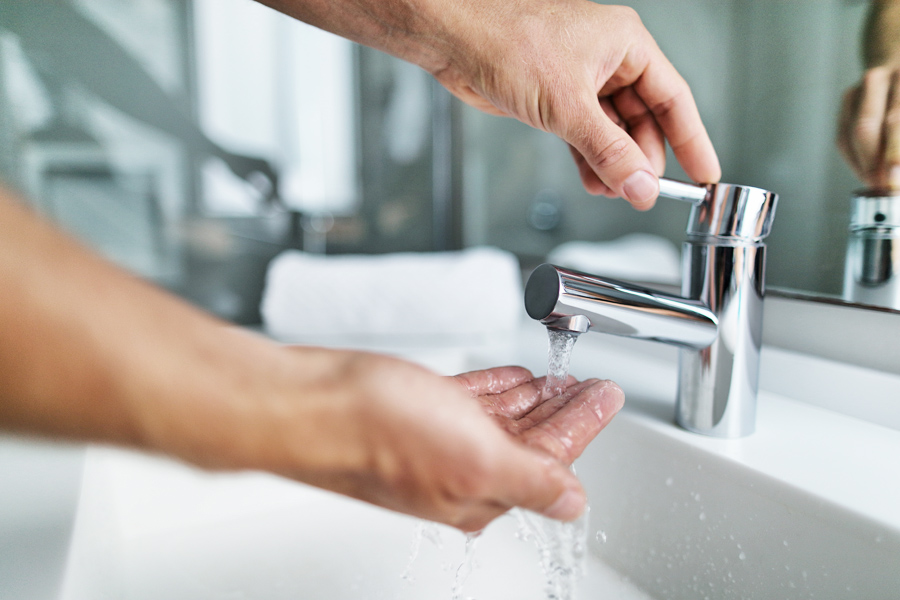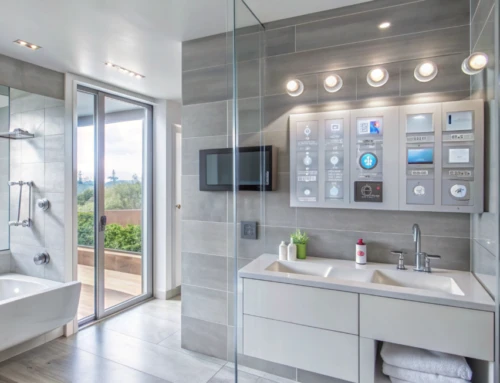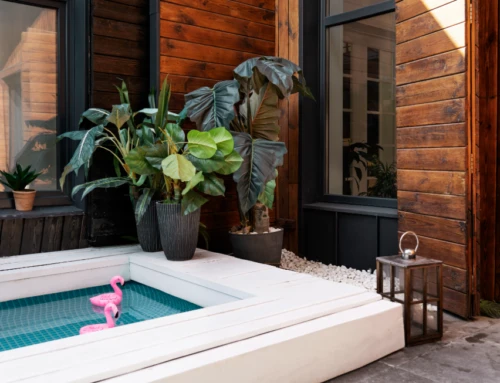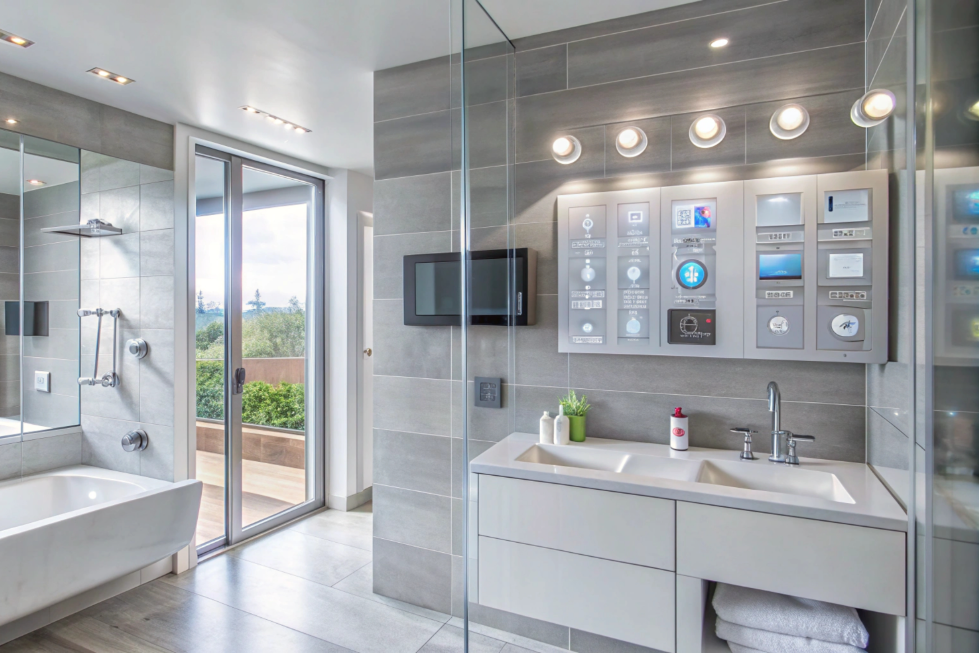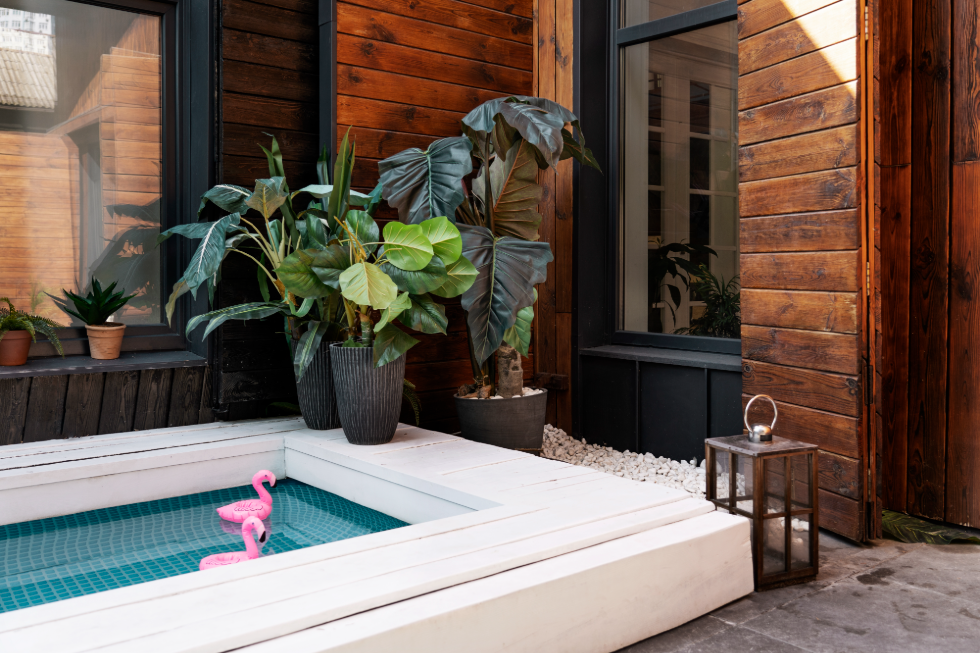Water conservation is becoming more important than ever, and one of the best places to start is right in your own bathroom. Whether you’re planning a complete bathroom remodel or just looking to make a few upgrades, there are numerous ways to make your bathroom more eco-friendly and conserve water.
The good news? Many water-saving solutions not only help protect the environment but can also reduce your utility bills. So, let’s dive into some smart and stylish ways to conserve water in your new bathroom and create a sustainable space that looks great and works even better!
1. Install Low-Flow Fixtures: Big Impact, Small Change
One of the simplest and most effective ways to conserve water in your bathroom is to install low-flow fixtures. Modern low-flow faucets, showerheads, and toilets are designed to use significantly less water without sacrificing performance. For example, a standard showerhead uses about 2.5 gallons of water per minute, while a low-flow showerhead can reduce that to as little as 1.5 gallons per minute. That might not sound like a lot, but over the course of a year, those savings add up!
When choosing a low-flow fixture, look for products with the WaterSense label. This certification, awarded by the U.S. Environmental Protection Agency (EPA), indicates that the fixture meets strict criteria for water efficiency and performance. By switching to WaterSense-labeled fixtures, you can reduce your water usage by up to 30% or more, making a big impact with a relatively small change.
2. Opt for Dual-Flush Toilets: The Power of Choice
Toilets are the single biggest water consumers in most households, accounting for nearly 30% of indoor water use. One of the best ways to cut down on this usage is to install a dual-flush toilet. These innovative fixtures give you two flushing options: a lower-volume flush for liquid waste and a higher-volume flush for solid waste. This simple choice can save thousands of gallons of water each year.
Dual-flush toilets are designed to be just as effective as standard models but use significantly less water. For example, while a traditional toilet might use up to 3.5 gallons per flush, a dual-flush toilet uses only 1.28 gallons for a full flush and just 0.8 gallons for a partial flush. That’s a huge reduction in water usage without compromising on performance!
3. Install Water-Efficient Showerheads: Enjoy Every Drop
We all love a long, relaxing shower, but it’s easy to waste water without realizing it. Fortunately, water-efficient showerheads can help you enjoy your showers guilt-free. As mentioned earlier, low-flow showerheads can reduce water usage significantly—saving up to 2,700 gallons per year for an average household. And don’t worry about sacrificing comfort; many of these showerheads are designed with air-induction or pressure-compensating technology to maintain a powerful spray while using less water.
Look for features like adjustable spray patterns and pause buttons, which allow you to stop the water flow while lathering up, shaving, or shampooing. By making a few simple changes, you can conserve water and still enjoy your daily showers to the fullest.
4. Choose Water-Saving Faucets: Stop the Drip, Save the Planet
Leaky faucets are not only annoying—they’re also a major source of water waste. Even a small drip can waste gallons of water over time. That’s why it’s essential to choose high-quality, water-saving faucets when remodeling your bathroom. WaterSense-labeled faucets, for instance, use a maximum of 1.5 gallons per minute compared to the standard 2.2 gallons, offering a 30% savings in water usage.
Look for faucets with features like aerators, which mix air with water to maintain pressure while reducing the amount of water used. Another option is a touchless or sensor faucet, which automatically turns off when not in use, preventing unnecessary water waste and offering added convenience and hygiene.
5. Fix Leaks and Drips Promptly: Don’t Let Water Go Down the Drain
One of the simplest ways to conserve water in your bathroom is to promptly repair any leaks or drips. Leaky faucets, running toilets, and faulty showerheads can waste a significant amount of water over time—sometimes even hundreds of gallons per month! Make it a habit to check your bathroom fixtures regularly for any signs of leaks, such as unexplained puddles, damp spots, or the sound of running water.
If you notice a leak, don’t delay in fixing it. Many common bathroom leaks can be repaired quickly and affordably with basic tools and parts. If you’re unsure how to fix a leak, consider hiring a professional plumber to handle the job for you. It’s a small investment that can save a lot of water—and money—down the road.
6. Consider a Tankless Water Heater: Hot Water, On Demand
Traditional water heaters continuously heat a large tank of water, which can lead to standby heat loss and wasted energy. A tankless water heater, on the other hand, heats water on demand, providing hot water only when needed. This can significantly reduce energy consumption and water waste, as you won’t need to run the tap for several minutes while waiting for the water to heat up.
Tankless water heaters are ideal for modern, eco-friendly bathrooms. Not only do they provide hot water instantly, but they also take up less space, offering more design flexibility. By investing in a tankless water heater, you can enjoy an endless supply of hot water while conserving both water and energy.
7. Design with Water Efficiency in Mind: Practical Tips
When remodeling your bathroom, think about ways to design for water efficiency. Consider installing a separate shower stall instead of a combined tub and shower if you rarely use the bathtub. You could also choose a shower door that’s designed to keep water inside the shower area, reducing splashes and the need for frequent floor mopping.
Think about installing a recirculating hot water system, which can provide instant hot water at every faucet and reduce water waste. Additionally, if you live in a region with hard water, consider installing a water softener to reduce mineral buildup in your pipes and fixtures, which can contribute to leaks and reduce the efficiency of your water heater.
8. Add Green Elements: Plants, Rainwater Harvesting, and More
Adding a touch of green to your bathroom doesn’t just make it look more beautiful—it can also help conserve water. Consider placing moisture-loving plants like ferns, orchids, or peace lilies in your bathroom. These plants not only thrive in a humid environment but also help to filter the air and add a natural touch to your decor.
If you’re looking for an even more impactful way to conserve water, consider incorporating a rainwater harvesting system into your bathroom remodel. While this may be a more significant investment, it can provide a sustainable source of water for flushing toilets, watering plants, or even bathing, depending on your local regulations.
9. Educate Your Family: Make Water Conservation a Habit
Finally, remember that water conservation starts with awareness and education. Encourage your family members to be mindful of their water usage by taking shorter showers, turning off the tap while brushing teeth, and using water-efficient settings on appliances like washing machines and dishwashers. Consider installing a timer in the shower to help everyone keep their showers short and sweet.
Make it a family goal to reduce water consumption, and celebrate milestones like reducing your water bill or hitting a certain conservation target. Water conservation is a team effort, and by involving everyone in the household, you can make a significant difference.
The Bottom Line: Every Drop Counts
Conserving water in your new bathroom is easier than you might think. By choosing water-efficient fixtures, fixing leaks promptly, and designing with sustainability in mind, you can create a bathroom that is both beautiful and environmentally friendly. Not only will you save water and reduce your utility bills, but you’ll also be contributing to a more sustainable future for everyone.
If you’re ready to start your bathroom remodel with water conservation in mind, our remodeling company is here to help. We specialize in designing eco-friendly bathrooms that blend style, function, and sustainability. Contact us today to schedule a consultation and learn more about how we can help you create the bathroom of your dreams while saving water and protecting the planet.

